 |
| THORNWILLOW PRESS / FOUAD C. DEBBAS COLLECTION |
| In the 1880’s, one of the Bonfils family set up his camera on the Beyazit Tower to make this panorama of Constantinople (Istanbul) and the Golden Horn. It took conversations with grandchildren of Bonfils to understand that the thousands of images of the Middle East taken during the mid- and late 19th century under the Bonfils name were the work of several members of the same family. |
 |
 heir ambitious hunt began in the 1970’s when, armed with cameras, tripods and a handful of clues, they fanned out across the Middle East, Europe and the Far East in search of historical photographs. They found images in Jordan, Bahrain, Qatar, Lebanon, Italy and the Netherlands (where they also discovered wax cylinders of the oldest vocal and musical recordings from the Middle East, hidden away in the Oriental Institute in Leiden). In the Vatican Archives, they unearthed pictures of an Iraqi monastery. In addition, they inspired the first Middle Eastern photographic “search-and-rescue missions,” presented more than 60 exhibitions in a dozen countries and solved 19th-century mysteries with a tenacity and expertise rivaled only by Sherlock Holmes.
heir ambitious hunt began in the 1970’s when, armed with cameras, tripods and a handful of clues, they fanned out across the Middle East, Europe and the Far East in search of historical photographs. They found images in Jordan, Bahrain, Qatar, Lebanon, Italy and the Netherlands (where they also discovered wax cylinders of the oldest vocal and musical recordings from the Middle East, hidden away in the Oriental Institute in Leiden). In the Vatican Archives, they unearthed pictures of an Iraqi monastery. In addition, they inspired the first Middle Eastern photographic “search-and-rescue missions,” presented more than 60 exhibitions in a dozen countries and solved 19th-century mysteries with a tenacity and expertise rivaled only by Sherlock Holmes.
“As we investigated a 250-year-old ongoing detective story, we were following in the footsteps of centuries of great sleuths, savants and synthesizers,” explains Gavin, who happened to be in the right place at the right time when the event that launched ahd took place. Many stories begin with the spark of an idea; this one began with a bang—on October 1, 1970.
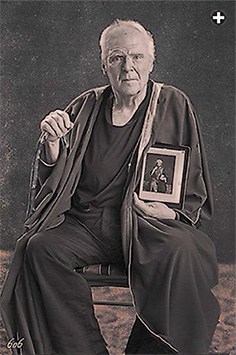 |
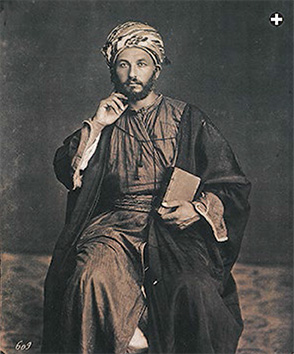 |
| ABOVE LEFT: ANNU PALAKUNNATHU MATTHEW |
| Father Carney E.S. Gavin (left, 2013) is founder and president of the Archives for Historical Documentation. His pose, robe and iPad image reflect the portrait of Shaykh Mohammed Mahfouz al-Sururi of Jerusalem (right, 1876), which also appeared in ahd's original Legacy of Light exhibition in 1980. |
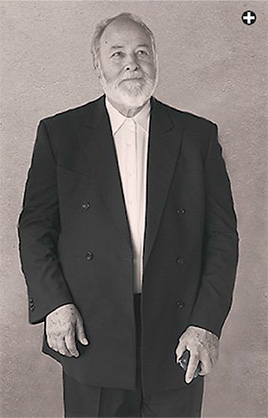 |
 |
| ABOVE LEFT: ANNU PALAKUNNATHU MATTHEW |
| William Corsetti (left, 2013) is ahd's curator for educational design. Viceroy Ismail Pasha (right, undated), was Khedive of Egypt and Sudan from 1863 to 1879. This portrait was made by the Abdullah Brothers, an Armenian trio who served as official photographers of Ottoman Sultan Abdulaziz i. |
 |
 |
| ABOVE LEFT: ANNU PALAKUNNATHU MATTHEW |
| Elizabeth Carella (left, 2013) is ahd's curator of historic photography. Through interviews with the Bonfils descendants, she and Gavin learned that this portrait of a Druze bride (right, undated), was most likely made by Lydie Cabanis Bonfils, wife of Félix Bonfils. She made numerous portraits of women in the family's Beirut studio. The bride's name is unknown. |
At 5:00 a.m. that day a bomb planted by two Vietnam War protesters blew a hole in the roof of the building that housed the Harvard Semitic Museum in Cambridge, Massachusetts. Police summoned Gavin, then assistant curator of the museum, to examine the damage, which turned out to be minimal. However, under the eaves exposed by the blast was an astonishing find: old crates full of dust-covered crimson boxes containing 27,000 photographic prints, slides and stereoscopic views of the Middle East taken in the late 19th and early 20th centuries. This long-forgotten collection had been assembled beginning in the late 1800’s by Professor David Gordon Lyon, the first curator of the museum, to teach undergraduates about the region.
“Carney became enthralled with these images,” says photographer William Corsetti, ahd’s curator for educational design, noting that his archeological training and participation in many digs in the Levant heightened Gavin’s interest in the rediscovered photos. “He could relate the images he saw in the photographs to places where he had been digging, and he was the first to look for clues in the photographs to what was happening at the time they were taken. This led him to the concept of ‘photo-archeology.’”
 |
| This image of the Nawab Sikandar Begum of Bhopal, India shows her flanked by her prime minister and second minister. It was used to illustrate her book, The Story of a Pilgrimage to Hijaz, published in 1909. |
The team of volunteers and experts that Gavin assembled to tackle the herculean tasks of identifying, cataloging and archiving the Lyon prints later formed ahd’s core. Along with Corsetti, New York Times photographer Elizabeth Carella, historian and author Nitza Rosovsky, photoarchivists Mary Ellen Taylor and Ingeborg Endter O’Reilly and a small army of interns began working on the collection, which included pictures taken by Francis Frith and his assistant F. M. Good, as well as more than 800 prints made by Félix Bonfils.
“The photos opened a window to the past that adds so much to … the visual history” of the region, says Rosovsky, ahd vice president and author of Jerusalem Walks, a guidebook to the city. “I felt like a detective, putting together clues from the past with what I knew from the present to try to date, name and sort the photographs.”
Identifying Bonfils was the first mystery that the team unraveled. Souvenirs d’Orient, an 1878 publication of Bonfils’s photographs, describes the collection of prints as “one of the most considerable achievements—photographic, artistic and scientific—of our epoch.” Nonetheless, ahd curator Carella recalls that in the 1970’s, all the team could learn about Bonfils was that he was “a genius.” Over the course of 12 years, clues from a Bonfils collection found in a barn in New Hampshire and conversations with Bonfils’s elderly grandchildren in Paris revealed that he was one of several family members who produced over 15,000 images of Egypt, Palestine, Syria and Greece between 1863 and 1867.
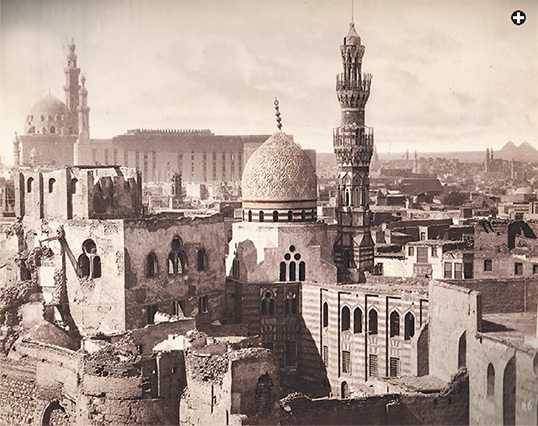 |
| MARI-CHA RHONÉ COLLECTION |
| Made in about 1872 by an unknown photographer, “Cairo: Southwest View” shows the ruined palace and the intact mosque and minaret of Khair Bey, with the mosque of Sultan Hassan in the background. |
Gavin credits much of ahd’s success in reconstructing the history of 19th-century photography in the Middle East to its “fortunate ability to connect with the descendants of the original photographers.” This was the case in the discovery of the Bonfils grandchildren as well as the great-grandchildren of Mendel John Diness, who moved from Odessa, in today’s Ukraine, to Jerusalem in 1848, becoming the city’s first resident photographer. Dr. Henry Berman, an independent film and video producer who joined Gavin’s team in the mid-1970’s, traveled to Paris to record the memories of the Bonfils grandchildren, and these interviews are now a part of the ahd’s collections. “Carney knew how important this was to preserving the history,” says Berman.
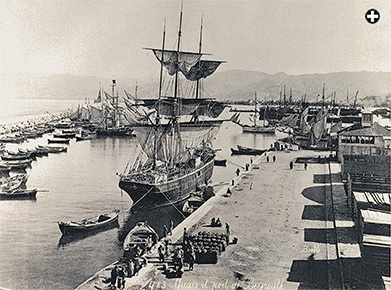 |
| FOUAD C. DEBBAS COLLECTION |
| The Port of Beirut, circa 1870, by Félix Bonfils. Images such as this offer much information about the extent of technologies and trade. Examining photos in this close way, says ahd researcher Paul Dunkel, is like “peeking through the knothole of history, and often you stumble on things no one else has seen.” |
Frith and Good were easier to trace. Frith was a renowned English photographer who made three trips to the Middle East, the first in 1856. He worked in Egypt, Palestine and Syria. Good was also from England. He went to Egypt with Frith and continued to travel to the Middle East through the 1870’s. He is known for his stereoscopic images.
As an archeologist, Gavin had interests that extended far beyond archiving and preserving the newfound historic images. He knew how important they could be for identifying and restoring historic monuments in the region. Because of the Muslim and Jewish proscription of “graven images,” regional historians and scholars had focused their attention on other kinds of records. In the 1970’s, they were still largely unaware that photographic documentation in the Middle East actually dated back to the late 1830’s. In fact, just weeks after François Arago, president of the Academy of Sciences in Paris, announced Louis Daguerre’s method of metal-plate image-making in 1839, European travelers embarked on the first “photo-voyages” into the Levant and the Holy Land, recording what they saw on daguerreotypes.
The ahd team’s quandary in the 1970’s was how best to share the huge trove of photographs from Cambridge with colleagues in the Middle East. Given the volume of material, Gavin asked Berman to videotape selections of the prints as the most expedient, least expensive way to make the collection available to others.
“Carney was brilliant, and he was one of the first in his field to animate still photographs in videos. We felt we were pushing the technology as far as we could,” comments Berman, who produced two films based on the collection: “Petra, Jerash and Damascus” and “The Holy Land and the Holy City.”
There was, however, an even greater advantage to videotaping the collection. “[It] enhanced our ability to read details hidden in the prints and allowed us to dig even farther into the light rays,” says Gavin.
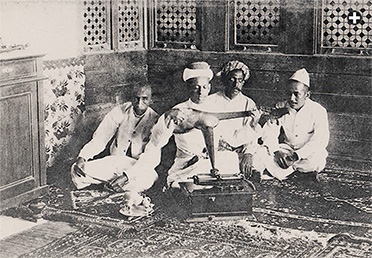 |
| This image, photographed on February 20, 1909 at the Dutch Legation in Jiddah and titled “Recording of Sayyid Mohammed,” led ahd researchers to a forgotten collection of more than 200 wax cylinders—the oldest known recordings from the Arab world. |
“People had not utilized the photos the way that we did,” explains Carella. “Carney’s idea to use a video camera to explore details within the photographs was really eye-opening. Exploring inside the photos both with the video and with macro lenses, I was able to recover details that weren’t apparent to the naked eye.”
Being able to see long-obscured inscriptions, vanished structures and architectural features later proved invaluable to Jordanian and Syrian archeologists involved in restoration projects in their countries. “While it’s wonderful that museums collect, house and preserve photographs, our team has seen it as almost wasteful not to use the photos for their content, because they are so rich in what we can learn from them,” Carella says.
In 1978, in collaboration with the United Nations Educational, Scientific and Cultural Organization (unesco), Gavin and his team held a conference at Harvard called the “Finding, Organizing, Copying, Using and Sharing Endangered Early Visual Documentation for the Preservation of Middle East Cultural Heritage Conference,” abbreviated as focus. Among those attending were high-level cultural representatives from Bahrain, Egypt, Jordan, Kuwait, Lebanon, Saudi Arabia, Syria and Turkey.
 |
Between the first focus conference and the second, held in 1981, the team attracted the support of two heads of state, helped establish the first regional network to support photographic search-and-rescue efforts, and launched a series of traveling exhibitions and conservation seminars. Gavin found an enthusiastic patron in King Hussein of Jordan, who commented, “I know of no work more important for the understanding of our past or for shaping our vision for the future.” In 1978, he placed Royal Jordanian Airlines at the team’s disposal to assist in photographic exploration in the region. After the second focus conference, King Fahd of Saudi Arabia funded the King Fahd Archive to “find, save and safeguard endangered photographic collections.”
In 1980, ahd photo exhibitions were held at Dumbarton Oaks in Washington, D.C., at the unesco headquarters in Paris and at Oxford University, as well as in the capitals of Bahrain, Jordan, Qatar, Saudi Arabia and Syria. That same year, the team helped launch the Museum of the History of Damascus in the newly restored Khaled al-Azm Palace by presenting it with a set of 50 prints of previously unknown historic photographs of the city. In Riyadh, it opened the city’s first public exhibition of historic photographs and cultural artifacts in Murabba’ Palace, residence of the late King Abdulaziz. Twenty-one years later, ahd celebrated the opening of the new National Museum in Riyadh with the return of the Barger Stele, one of the oldest Roman artifacts found in the kingdom.
Exhibitions in Manama, Bahrain, in 1980 encouraged the local population to search for family artifacts and photos, which later spurred the creation of the Bahrain National Heritage Center. Carella recalls that seeing images of the pearling trade between India and Bahrain led her, later that year, to search for additional photo archives in India—where she discovered photographs of the Hajj made by Indian pilgrims. During a visit to Doha, Qatar, curators from the team inspired colleagues at the National Museum to archive the amir’s collection of historic photographs.
In 1981, Gavin’s team brought an “eye-opening” exhibition of Bonfils photographs of Jerash, Amman and Petra to the National Gallery of Fine Arts in Jordan, recalls Suhail Bisharat, gallery director from 1981 to 1993. “The old photos really touched a chord, especially among the older generation of visitors. They lived during that period and could immediately recognize the images.”
“We owe a lot to Father Gavin,” he says. “He had a passion for the photographs. If not for him, we would have lost all of these documents that ahd discovered. We clearly underestimated [the importance of] photography. History will prove how these photographs will become valuable tools.”
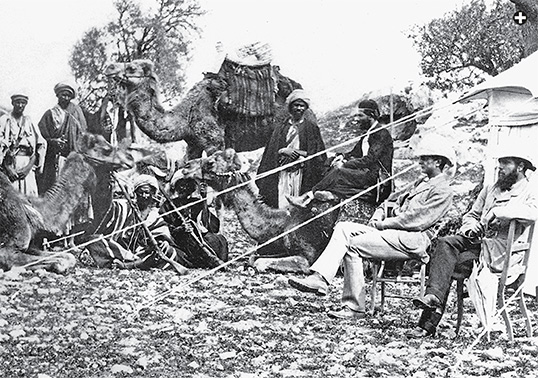 |
| This detail from a larger photo made around 1870 shows photographer Félix Bonfils and his son Adrien seated to the right of hired porters and camel drivers. The location of their camp is unknown. |
Bisharat believes ahd’s work will be a source of inspiration for future generations. “They have instilled awareness in many institutions around the world, and people are starting to appreciate this all the more because of the acceleration of change in the region,” he says. “Future historians and scholars will refer back to their work.”
Dr. Raouf Sa‘d Abujaber, author and renowned historian of 19th-century Transjordan and Bilad al-Sham (Syria), participated in both focus conferences and has collaborated on a number of book projects with ahd. “They drew the attention of leaders of cultural institutions in the region and made people aware of the importance of these old photographic documents for the political, social and military history of the Arab world during the 19th and early 20th centuries,” he comments. As a result of the conferences, he recalls, Prince Ali Bin Nayef opened a center for old documents in the Royal Palace in Amman and the Jordan Library established a department for historic photographs and documents.
 |
In the decade following the second focus conference, the team was constantly on the move. Carella spent four months traveling through Turkey, Greece and most of the Middle East, consulting with conference participants about their archives. Her visit to the Bibliothèque Orientale at St. Joseph University in Beirut inspired Father Martin McDermott, the library director, to dig deeper into the archives, where in 1981 he uncovered more than 15,000 photographs taken primarily by French Jesuits, beginning in the 1840’s.
Meanwhile, colleagues in Jordan’s Department of Antiquities used 19th-century photographs compiled by the team to help with a unesco-supported restoration project in Jerash, as well as architectural restorations in Petra. ahd’s photographic archives are “priceless,” says Karim Kawar, a former Jordanian ambassador to the us who interned with ahd during his undergraduate years at Boston College. “Father Gavin and his team have salvaged and restored photos that are of great value historically and culturally. These photographs of Jordan document our rich history and establish a reference point of where we were and how we have grown. This gives us pride in our culture and heritage.
“Many try to marginalize development in the Levant area in the 19th and 20th centuries, especially in Palestine,” he says, but the photographs “challenge the notion that this was a barren land that offered little until settlers from western civilizations immigrated and started building…. ahd’s legacy will be protecting a piece of history and making it available to current and future generations.”
While the group’s exhibitions and conferences in the Middle East continued to heighten regional awareness of the importance of historic photodocumentation, a 1982 grant from the King Fahd Archive enabled the team to pursue photo-archeology search-and-rescue missions in Europe and the United States. Thus the team members were able to spend several years inventorying 66 albums containing 1800 albumen prints that had been presented by Sultan Abdul Hamid ii of Turkey to the Library of Congress in 1894, finally publishing Imperial Self-Portrait—The Ottoman Empire as Revealed in Sultan Abdul Hamid ii’s Photography Albums in 1989.
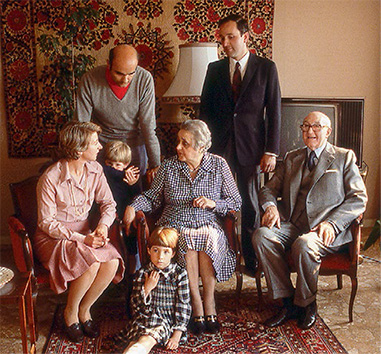 |
| ELIZABETH CARELLA |
| Oral history accounts from Madame Marcelle Pinatton, center, daughter of photographer Adrien Bonfils, are now part of ahd’s collections. |
The work to rescue the photographs, stored away on dusty shelves for nearly a century, would no doubt have pleased the sultan, who once told his chief secretary, “Every picture is an idea. One picture can evoke political and psychological significance, which a hundred written pages could not convey.”
Concurrent with that project, research at the Oriental Institute in Leiden in 1983 uncovered hundreds of photos from Jiddah, Saudi Arabia, sent by consuls general of the Netherlands beginning in the late 1800’s. One photo, labeled “The Recording of Sayyid Mohammed—February 20, 1909,” launched what Gavin calls “phono-archeology.”
The picture showed several musicians sitting in front of an Edison horn to make wax-cylinder recordings. Gavin, Corsetti and Carella searched farther through the institute’s attic and discovered bags containing more than 200 wax cylinders, stored in old cardboard boxes covered with notations in Dutch, Arabic and Malay. One photo and three determined explorers led to the discovery of the oldest known recordings from the Arab world in Arabic, Urdu and five languages of present-day Indonesia.
Dietrich Schueller, emeritus director of the Phonogramm-archiv of the Austrian Academy of Sciences in Vienna, recalls when the researchers arrived with suitcases packed full of cylinders. “We had just built a new machine to record old cylinders…,” he says. “We discovered many unexpected things on these cylinders which are incredibly important. They are the oldest recordings from this part of the world.” The discovery and restoration of the cylinders led to research efforts in the late 1980’s by specialists at the Hajj Research Center in Jiddah and at the University of San’a in Yemen.
In 1989, the ahd team was asked to check whether a group of glass-plate negatives, found by photographer John Barnier at a Minnesota yard sale, could be the long-lost work of Mendel John Diness, who emigrated from Jerusalem to the us with his family in 1860. Gavin and his crew not only identified the photos as works by Diness, but also located his descendants.
 |
| ELIZABETH CARELLA |
| In 1983, Gavin’s interviews with Daniel van der Meulen, retired consul for the Netherlands in Jiddah, helped interpret the hundreds of photos sent from there. |
Paul Dunkel worked with the team on the exhibition of the Diness photos, called “Jerusalem Re-Discovered,” that opened at the Harvard Semitic Museum in 1993, showed at Boston College in 1996 and 1997, moved to Europe in 2004 and continues to travel internationally. “With high resolution you can find things in a photograph that you couldn’t see in the original,” explains Dunkel, who owns The Archival Image in Windsor, Vermont and has collaborated with ahd on numerous projects. “Sometimes you zoom in so far you forget where you are. When you do this, you are at an incredibly intimate level, peeking through the knothole of history, and often you stumble on things no one else has seen.” In one Diness photo, for instance, he was able to bring out the domes of a mosque, identified by an architectural historian as an important Hanbali center of learning, that once stood in the southeast corner of the Haram, Jerusalem’s great sanctuary.
Today, ahd is recognized as the pioneer in the recovery, preservation and sharing of the photographic heritage of the Middle East. “Until [Gavin] started ahd, there was no other institution doing anything like it,” says Luke Pontifel, owner of Thornwillow Press in Newburgh, New York, which this year plans to publish Millennial Cities: A Portfolio of Photogravure Prints using historic prints of Cairo, Makkah, Madinah and Istanbul from the ahd collections.
“Father Gavin has a passion for the photographs; he wanted to create an archive that would bring all these documents from many different institutions around the world together in one place,” explains Pontifel. He notes that Gavin took ahd from “a flash of an idea to the actual execution of an enormous project that seemed almost impossible to achieve…,” establishing “standards for recording, keeping and preserving the material and making it accessible, all through [ahd’s archives]. That is a remarkable feat.”
“I am very proud of having set free forgotten local photographic geniuses from the Middle East,” says Gavin. “ahd has learned much from those whose visions, captured in sunlight, we are privileged to bring back. Some of that knowledge comes not out of the photos but out of the quest for understanding.”
 |
Piney Kesting (pmkhandly@hotmail.com) is a Boston-based freelance writer and consultant who specializes in the Middle East. She is currently working on a book about women entrepreneurs in the Middle East, Pakistan and Turkey. |
 |
Annu Palakunnathu Matthew (www.annumatthew.com)
is a photo-based artist in Providence, Rhode Island. She is represented by SepiaEYE, New York and Tasveer, India. She is also a professor of art specializing in photography and director of the Center for the Humanities at the University of Rhode Island. |